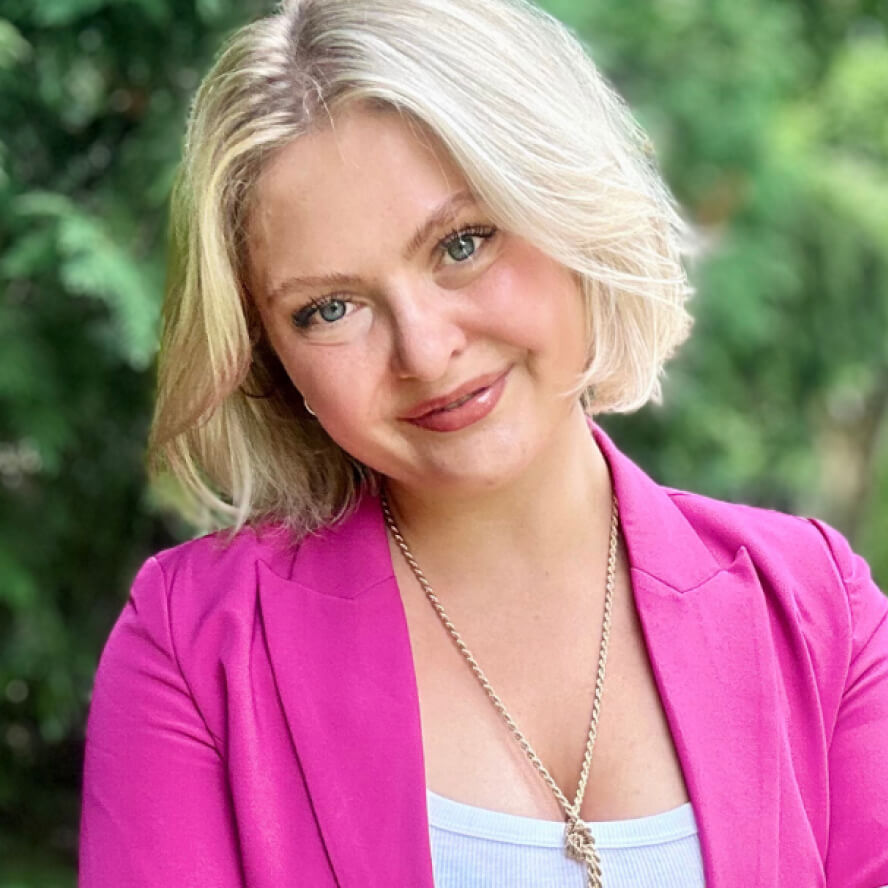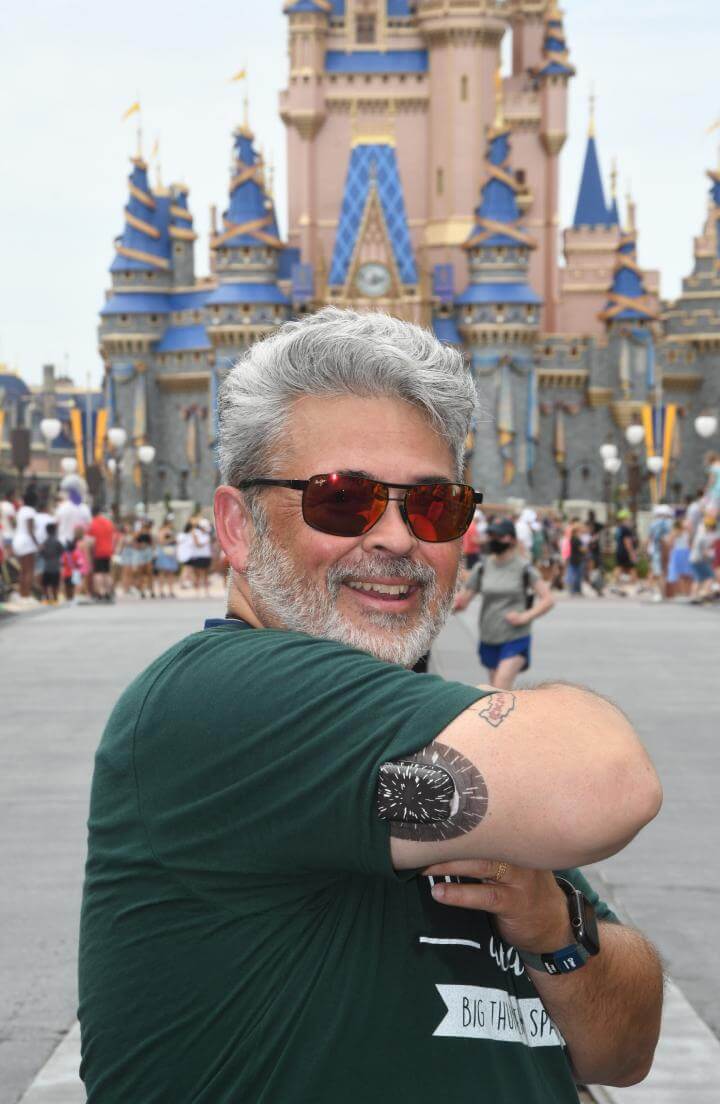T1D Guide
T1D Strong News
Personal Stories
Resources
T1D Misdiagnosis
T1D Early Detection
Research/Clinical Trials
Broadway Star Reveals Type 1 Diabetes Diagnosis
On Wednesday, October 29, 2025, just before National Diabetes Awareness Month (NDAM), which takes place every November, Ryan McCartan shared his type 1 diabetes (T1D) diagnosis with Breakthrough T1D (formerly JDRF). Ryan has starred in some of Broadway's most beloved productions, from Little Shop of Horrors to The Great Gatsby. Now, he’s capturing the hearts of fellow T1Ds across social media.
.jpg)
Ryan’s T1D Warning Signs
“My parents were out of town—I think they were in Chicago,” Ryan shared with Breakthrough T1D. “I was six. I don’t really remember, but my grandparents were babysitting my sister and me, and I wet the bed every night when my sister and I were there.”
When Ryan’s parents got home, his grandma expressed her concern to them. His parents were baffled—Ryan had never wet the bed before. Ryan’s dad brushed it off at first, assuming Ryan was just nervous about being away from his parents.
But there was more to the story. Ryan’s mom had a gut feeling. She took him to the doctor, where he was asked a few questions about his symptoms, then peed on a stick. That’s when he found out—it was type 1 diabetes (T1D).
Common Warning Signs of T1D
Bed-wetting (or frequent urination) isn’t the only common warning sign of T1D. Others include:
Increased Appetite
Despite frequent eating, you may feel constantly hungry as your body struggles to use glucose effectively for energy.
Abdominal Pain/Vomiting
Gastrointestinal symptoms such as nausea, vomiting, bloating, and abdominal pain can indicate undiagnosed T1D or dangerously high blood sugar leading to diabetic ketoacidosis (DKA).
Feeling Tired or Lethargic
Without sufficient insulin, glucose remains in the blood rather than being used to fuel cells and muscles, leading to extreme fatigue and weakness.
Extreme Thirst
High blood sugar causes glucose loss through urine, resulting in dehydration and persistent thirst that isn’t relieved by drinking water.

Rapid Weight Loss or Loss of Muscle Bulk
In the absence of insulin, the body breaks down fat and muscle for energy, leading to sudden, unexplained weight or muscle loss.
Itchiness Around the Genital Area or Regular Bouts of Thrush
Elevated sugar levels can lead to yeast infections, itchiness, pain, redness, and thick white discharge around the genital area, sometimes causing pain during urination or sex.
Blurred Vision
High blood sugar can damage or enlarge blood vessels in the eyes, causing swelling, leakage, and lens shape changes that blur vision.
Slow to Heal Cuts and Bruises
Poor circulation from high blood sugar slows the healing process because blood and nutrients take longer to reach wounds and fight infection.
Fruity Breath
When the body can’t use glucose or muscle for energy, ketones build up in the blood and urine, producing a distinctive fruity odor on the breath.
Heavy, Labored Breathing
Severe cases of undiagnosed diabetes can progress to diabetic ketoacidosis (DKA), causing deep, heavy breathing as the body attempts to correct its acid-base balance.
Dry Skin
Persistently high blood sugar can cause dry, itchy skin, poor circulation, and slow-healing skin infections that may indicate T1D.
T1D symptoms can resemble viral infections and often appear after illnesses like COVID-19, mononucleosis, or the flu. According to the National Library of Medicine, several viruses are known triggers.
While the exact cause of T1D still remains unclear, it’s obvious that a T1D diagnosis forever changes a person and their family. This was definitely true for Ryan and his.
T1D Bootcamp
In Park Nicollet, Minnesota, where Ryan grew up, he and his family received a standard rundown on how to manage T1D successfully post-diagnosis.
“They had a diabetes boot camp,” Ryan said. “I learned all of the things I needed to learn. It got me balanced, and that was that.”
Ryan’s journey as a professional actor began when he was just 8 years old. Millennials may remember seeing Ryan for the first time in shows like Liv & Maddie on the Disney Channel or Rocky Horror Picture Show on FOX.

“As a child actor, you’re already kind of a burden…So, I don’t know if it was a conscious decision from my parents, but we just went there (to filming locations) and did the job,” Ryan said.
Mention of his T1D diagnosis wasn’t in the cards—they didn’t want to rock the boat on set.
Dangerous Lows Led to Valuable Life Lessons
But T1D is hard to ignore, and it rocked the boat anyway.
When Ryan’s mom picked him up after a long day of tech rehearsal for his lunch break, he gave himself insulin as usual, but, being a young boy, got distracted by his video game. His blood sugar kept dropping. His mom didn’t know at first—she was driving the car and Ryan was in the back seat.
“Suddenly, I just kind of vanished,” Ryan said. “I wasn’t paying attention to myself. That was my first diabetic reaction.”
Ryan’s mom handed him glucose tablets, but he could barely open them.
“I remember this very, very distinctly,” Ryan said. “There was a Capri Sun in the car, and my mom just squeezed it. I started coming to…by the time the reaction had happened and I’d come back up—all within the drive—we parked the car in the parking lot of the theater. And my mom made a decision.”
“We are talking about this with everyone,” she proclaimed.
“Brilliant parenting,” Ryan reflected.
Ryan credits that moment with empowering all of his colleagues, since he was eight, to learn about T1D. From that moment forward, he always shared on set.

Speaking Up at Work
“I’ve never had a workplace accident of any kind,” Ryan said. “Workplace lows, of course, but everyone knows about it, and if I need a break, they give it to me.”
Ryan proudly shares about T1D, especially when people don’t ask.
“My safety is my number one priority,” Ryan said. “I’m not sorry about that.”
Ryan compares living with a chronic illness to having a lifelong companion: ”It goes with you everywhere,” he said.
“If you have to make space for me, you have to make space for my diabetes,” Ryan said. “It is not an option.”
Ryan is grateful to have started his career young. Today, he knows that leading a functional life with T1D is possible so long as it is managed with the utmost care.
Ryan’s decades-long career wouldn’t be possible without diligence in his disease. “My career and illness are inextricably linked,” he said.

Ryan used his illness as a catalyst to pursue his dream of becoming an actor. And still, he knew that if he didn’t manage it well, his dream wouldn’t be possible.
“If I want my career to be successful, my diabetes has to be successful,” Ryan said.
Ryan’s T1D Goals
If Ryan could go back and give his younger self advice on managing T1D, he said he would try to focus more on deriving a sense of purpose and pleasure from dialing in his T1D control.
“There are a lot of times where I feel very resentful,” Ryan said. That’s his truth.
“No one asks to be chronically ill,” he said. “While you can live a functional life, it does take a lot of work. And I think, as a younger person, I let that resentment in.”
Ryan didn’t let it define him or infect him to the point of giving up. Still, as an adult and through undergoing therapy for his condition, he’s found a sense of pride and achievement from opening up his Dexcom CGM stat sheet and seeing consistent control.
“You think about you—derive your sense of achievement, accomplishment, being cool—on how well you take care of yourself,” he advised. “If I had done that, I think I would’ve spared myself a lot of resentment.”
“The Future is Bright.”
Mitigating opportunities to wallow in self-hatred, which Ryan acknowledges is a big part of being chronically ill, means making T1D a source of pride rather than a lifelong chore.
“My body is my vessel,” Ryan said. “If my body doesn’t work, I can’t go to work.”
Ryan is currently in a Broadway show. He wears a Dexcom, so he can keep his phone open on his dressing room table and always see his blood sugar levels.
“That option was not open to me when I was diagnosed,” Ryan said. “Now, a handful of years later, it is.”
It makes Ryan’s management and ability to do what he does so much easier.
“I rejoice in the advancements that have been made,” Ryan said. “I can’t even imagine what could happen when I’m on Broadway 20 years from now. Diabetes is a part of my life, but it impacts my livelihood — I need to be as functional and to receive as much help and assistance from people, programs, technology, and advancements as I can get my hands on.”

Ryan acknowledged that working professionals like himself don’t just want diabetes technology; they require it to sustain their livelihoods.
“We are now living in the future I was promised when I was diagnosed,” Ryan reflected. “The future from here looks incredibly bright if we can keep going.”








.webp)

.webp)
.jpg)


.jpg)


.jpeg)
.jpg)
.jpg)


.jpg)
.jpg)

.jpg)
.jpg)
.jpg)
.jpg)
.jpg)

.jpg)
.jpg)
.jpg)
.jpg)
.jpg)
.jpg)

.jpg)
.jpg)

.jpg)
.jpg)
.jpg)

.jpg)
.jpg)


.jpg)
.jpg)
.jpg)













.jpg)


.jpg)













.webp)





%20(1).png)




.jpeg)






.jpg)






















.webp)